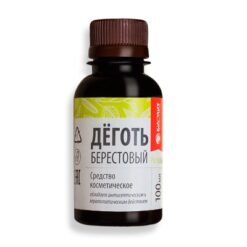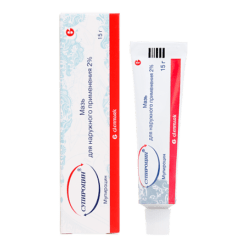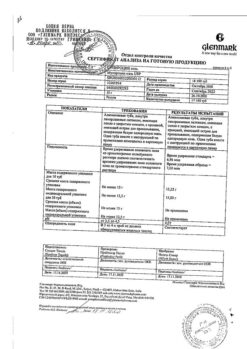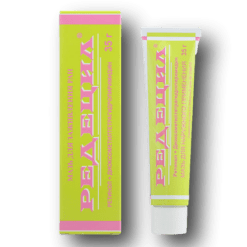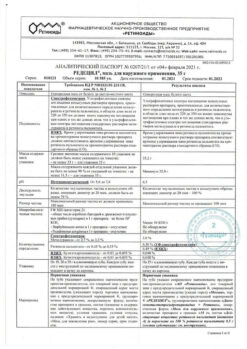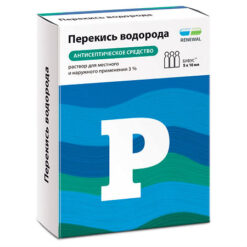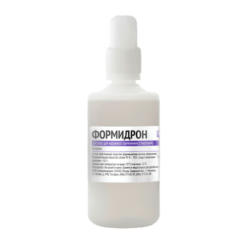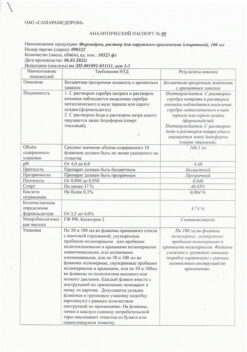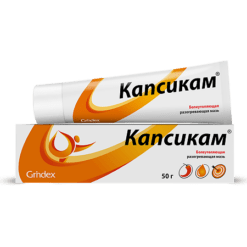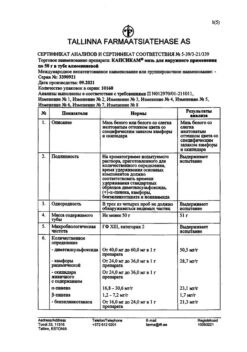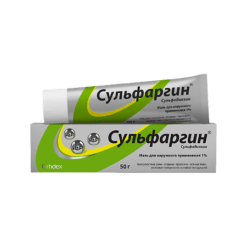No products in the cart.
Elokom, cream 0.1% 15 g
€1.00
Out of stock
(E-mail when Stock is available)
Description
Elocom is a synthetic non-fluorinated glucocorticoid for external use.
The mechanism of action appears to be related to inducing the release of proteins that inhibit phospholipase A2 and are collectively known as lipocortins. These proteins are thought to control the biosynthesis of potent inflammatory mediators such as PG and LT by inhibiting the release of their common precursor, arachidonic acid.
Carcinogenesis, mutagenesis. In genetic toxicity studies of mometazone furoate, including the Ames assay, mouse lymphoma test, and micronucleus test, there was no evidence of mutagenic effects of the drug.
There have been no long-term animal experiments to evaluate the carcinogenic effects of the drug.
Pharmacokinetics
The extent to which topical glucocorticosteroids penetrate the skin depends on many factors, including the composition of the drug and the integrity of the epidermal barrier. Inflammation and other skin processes can increase skin penetration.
In a single topical application to intact skin (without an occlusive dressing) approximately 0.7% of the ointment dose and approximately 0.4% of the cream are detectable in the blood after 8 hours. There is reason to believe that the absorption rate of glucocorticosteroid in the dosage form of lotion is also negligible.
Indications
Indications
Active ingredient
Active ingredient
Composition
Composition
1 g cream contains:
the active ingredient:
mometasone furoate 1 mg;
excipients:
hexylene glycol,
Phosphoric acid,
propylene glycol stearate,
stearyl alcohol,
cetyl stearyl ester,
cethearet-20,
titanium dioxide,
aluminum octenilsuccinate,
derived from starch,
Wax white,
Vaseline bleached,
purified water.
How to take, the dosage
How to take, the dosage
Special Instructions
Special Instructions
Elocom is not intended for use in ophthalmology.
When using GCS for external use as a result of systemic absorption, reversible suppression of hypothalamic-pituitary-adrenal system function and symptoms of adrenal insufficiency after drug withdrawal are possible. Cushing’s syndrome, hyperglycemia, glucosuria may develop in patients. In patients using GCS on extensive areas of the skin surface, hypothalamic-pituitary-adrenal system functions should be regularly checked (ACTH stimulation test, morning plasma cortisol levels). If signs of inhibition of hypothalamic-pituitary-adrenal system function appear, the interval between applications should be increased, the drug should be discontinued, the drug should be switched to a less active GCS; in some cases, if necessary, corticosteroids for systemic use should be prescribed.
Elocom is not recommended for use with occlusive dressings. Close medical supervision is required if this use is necessary.
The drug should not be applied to the face or to the axillary and inguinal folds.
If signs of skin irritation or hypersensitivity occur during use, treatment should be stopped and appropriate therapy should be given.
If secondary infection has occurred, antimicrobial therapy should be prescribed. If the drug has no effect, it should be withdrawn.
If there is no improvement after 2 weeks of therapy, the clinical picture should be reassessed and the diagnosis clarified.
Contraindications
Contraindications
Side effects
Side effects
In controlled clinical trials in 319 patients, the incidence of adverse events associated with the use of Elocom cream was 1.6%.
Burning, itching, and skin atrophy have been reported; pink acne has been reported.
In controlled clinical studies in children between 2 and 12 years of age (n=74), the incidence of adverse events (burning, itching, furunculosis) associated with cream use was approximately 7%.
Overdose
Overdose
Pregnancy use
Pregnancy use
Adequate, well-controlled studies of the teratogenic potential of mometasone furoate when used during pregnancy have not been performed. The use of Elokom cream, ointment, or lotion in pregnancy is possible only if the expected benefits of treatment to the mother outweigh the potential risk to the fetus.
In systemic use, glucocorticosteroids appear in breast milk, which may lead to growth retardation of the baby, effects on endogenous glucocorticosteroid synthesis and other adverse effects.
There is no evidence that systemic absorption of glucocorticosteroids by topical administration can result in detectable amounts in breast milk. However, due to the fact that many drugs are excreted with breast milk, nursing women should use Elokom cream, ointment, lotion with caution.
Similarities
Similarities
Additional information
| Shelf life | 2 years |
|---|---|
| Conditions of storage | The drug should be stored at 2° to 30°C. |
| Manufacturer | Schering-Plough Labo N.V., Belgium |
| Medication form | exterior cream |
| Brand | Schering-Plough Labo N.V. |
Related products
Buy Elokom, cream 0.1% 15 g with delivery to USA, UK, Europe and over 120 other countries.


